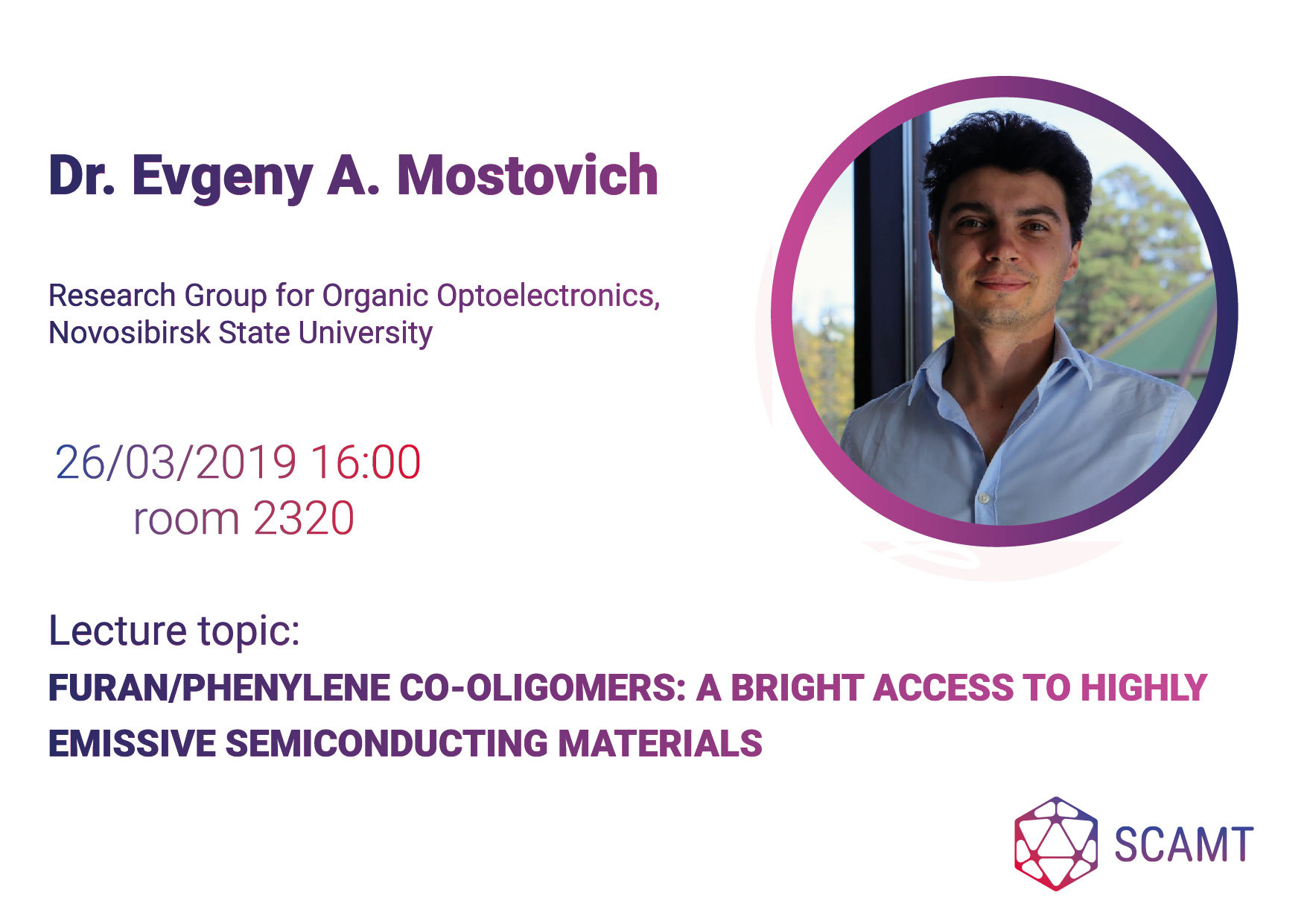26 марта 2019 в 16:00 в SCAMT прочитает лекцию Евгений Мостович — кандидат химических наук, групп-лидер исследовательской группы «Органической оптоэлектроники», Новосибирский Государственный Университет.
Ученый выступит с лекцией: «FURAN/PHENYLENE CO-OLIGOMERS: A BRIGHT ACCESS TO HIGHLY EMISSIVE SEMICONDUCTING MATERIALS»
Abstract: Organic materials which combines high charge mobility and efficient solid state photoluminescence are highly demand according to realize the potential applications in fully colored active matrix displays, integrated photonic circuitry, optical sensing, and electrically driven organic lasers. However in most cases, organic semiconductors with high charge carrier mobility due to strong pi-pi overlap suffer from photoluminescence quenching in solid state caused by aggregation effects. Nevertheless it was reported that conjugated rod-like small molecules e.g. thiophene/phenylene co-oligomers (TPCOs), distyrylbenzenes, anthracene derivatives demonstrated high efficiency photoluminescence in solid state and charge mobility >1 cm2/Vs, which makes these materials promising candidates for application as active layers in organic optoelectronics.
Rod-like furan/phenylene co-oligomers (FPs) demonstrates remarkable luminescence and charge transport properties that can be carefully tuned upon variation of their terminal substitution and molecular length. Moreover, light doping of short chain FPs by the longer chain FPs molecules, which facile embedding into the short FPs crystal lattice, could be effectively used for fine tuning of its optical and electronic properties. The top-contact top gate organic field effect transistors shown the hole mobility up to 0.35 cm2/Vs and the low threshold voltage for the long chain FPs co-oligomers. In summary, high molecular torsional rigidity, high photoluminescence quantum yield both in vapor- or solution-grown single crystals (PL QY > 45%), high solubility in organic solvents (>1 g/L) makes FPs highly perspective for optoelectronic applications.
